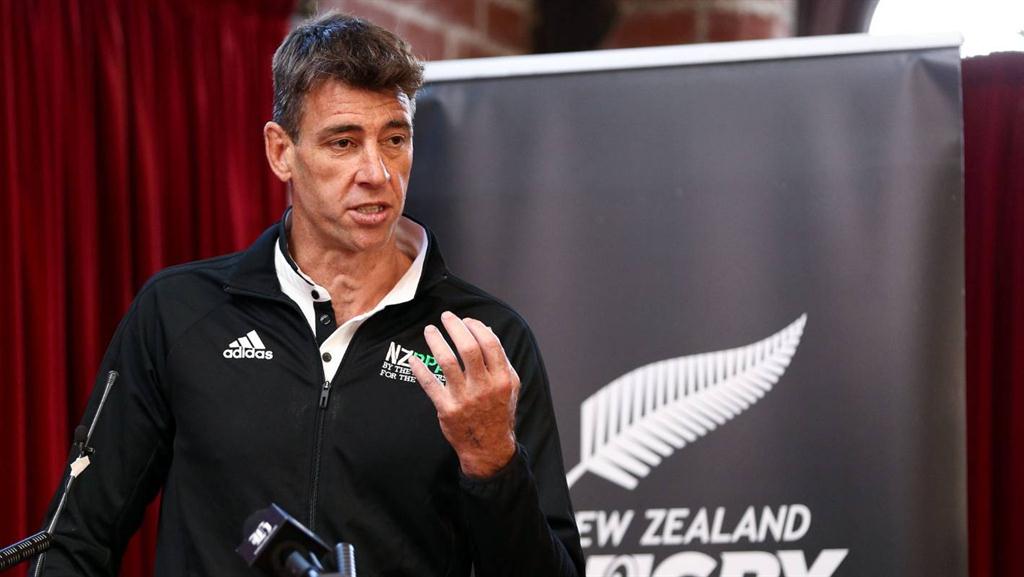NZ players keen to face the best
New Zealand's rugby players are keen to ensure any future Super Rugby format involves facing the best opposition as it has led to greater competition on the international stage, the head of their union has said.
Nampa/Reuters
With travel restrictions to curb the spread of Covid-19 hindering future cross-border competition, New Zealand Rugby (NZR) has proposed a new format for its sides that does not involve teams from South Africa or Argentina.
NZR Players' Association head Rob Nichol, however, said they were simply addressing the fact that borders might still be closed.
“The players love the idea of travelling abroad and playing fixtures against really good opposition,” Nichol told Reuters. “But the way we are with Covid, the future might look different.
“We may be still consigned to our own borders.”
Super Rugby was supposed to revert to a 14-team round robin format next year, but NZR's plans for a competition involving eight to 10 teams had been read as the organisation abandoning the southern hemisphere's South Africa, New Zealand, Australia and Argentina Rugby (Sanzaar) alliance.
Agreement stands
Nichol, however, said as far as he knew, NZR remains committed to Sanzaar, which organises the Super Rugby club tournament and the international Rugby Championship.
“NZR is not walking away from Sanzaar,” Nichol said.
“They've just recognised that they can't have a Super 14 next year so what they're doing is looking at what they can do.”
One possibility would be playing club teams from South Africa, Argentina and Japan in a crossover tournament at the conclusion of New Zealand's Super Rugby competition, he said.
However, for that to happen, World Rugby would need to broker an agreement between national unions and the powerful European clubs on a global calendar, allowing them to shift test windows to the end of the year.
Flexibility
Current test windows are in June and July, when northern hemisphere teams travel south, and November and December, when the south travel north.
The Rugby Championship is played from August to October, while the Six Nations is in February and March.
Nichol said shifting the mid-year tests to an extended October to December window would allow that flexibility for a cross-border club competition in the southern hemisphere.
Those matches got the players excited, he said, while the long-haul travel and weeks away from home had helped prepare them for the intensity of tests, which spilled over into the international arena and ultimately Rugby World Cups.
Performing week in, week out
Southern hemisphere teams have won eight of the nine global tournaments and five of the six since rugby went professional in 1996.
“Super Rugby has been fantastic for the southern hemisphere,” he said. “I'd argue it's a big reason why southern hemisphere countries have done so well at Rugby World Cups because they're so used to travelling to foreign environments and performing week in, week out.”
With travel restrictions to curb the spread of Covid-19 hindering future cross-border competition, New Zealand Rugby (NZR) has proposed a new format for its sides that does not involve teams from South Africa or Argentina.
NZR Players' Association head Rob Nichol, however, said they were simply addressing the fact that borders might still be closed.
“The players love the idea of travelling abroad and playing fixtures against really good opposition,” Nichol told Reuters. “But the way we are with Covid, the future might look different.
“We may be still consigned to our own borders.”
Super Rugby was supposed to revert to a 14-team round robin format next year, but NZR's plans for a competition involving eight to 10 teams had been read as the organisation abandoning the southern hemisphere's South Africa, New Zealand, Australia and Argentina Rugby (Sanzaar) alliance.
Agreement stands
Nichol, however, said as far as he knew, NZR remains committed to Sanzaar, which organises the Super Rugby club tournament and the international Rugby Championship.
“NZR is not walking away from Sanzaar,” Nichol said.
“They've just recognised that they can't have a Super 14 next year so what they're doing is looking at what they can do.”
One possibility would be playing club teams from South Africa, Argentina and Japan in a crossover tournament at the conclusion of New Zealand's Super Rugby competition, he said.
However, for that to happen, World Rugby would need to broker an agreement between national unions and the powerful European clubs on a global calendar, allowing them to shift test windows to the end of the year.
Flexibility
Current test windows are in June and July, when northern hemisphere teams travel south, and November and December, when the south travel north.
The Rugby Championship is played from August to October, while the Six Nations is in February and March.
Nichol said shifting the mid-year tests to an extended October to December window would allow that flexibility for a cross-border club competition in the southern hemisphere.
Those matches got the players excited, he said, while the long-haul travel and weeks away from home had helped prepare them for the intensity of tests, which spilled over into the international arena and ultimately Rugby World Cups.
Performing week in, week out
Southern hemisphere teams have won eight of the nine global tournaments and five of the six since rugby went professional in 1996.
“Super Rugby has been fantastic for the southern hemisphere,” he said. “I'd argue it's a big reason why southern hemisphere countries have done so well at Rugby World Cups because they're so used to travelling to foreign environments and performing week in, week out.”





Comments
Namibian Sun
No comments have been left on this article